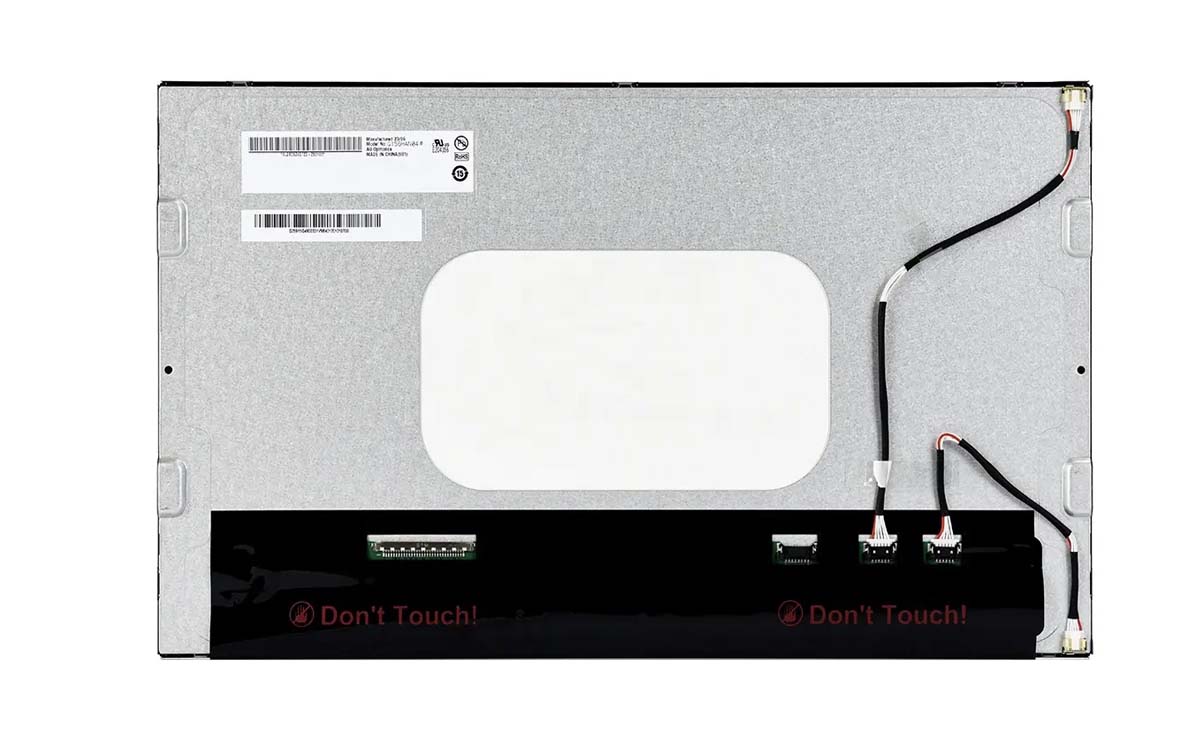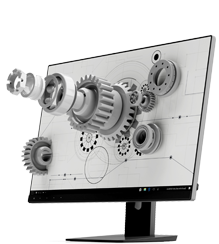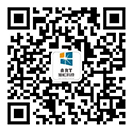Technical principle of high brightness customization for industrial LCD screens

Whether it is outdoor equipment monitoring under scorching sun or production line control under strong light in the workshop, conventional screens often cause information misreading due to insufficient brightness or environmental interference Therefore,
High brightness customization of industrial LCD screens: Display innovation in strong light environments.
In industrial settings, the visibility of the display screen directly affects operational efficiency and safety. Whether it is outdoor equipment monitoring under scorching sun or production line control under strong light in the workshop, conventional screens often cause information misreading due to insufficient brightness or environmental interference. Therefore, the high brightness customization technology of industrial LCD screens has become the core solution to break through environmental limitations. This article will analyze how industrial LCD screens can achieve clear display in strong light environments through high brightness customization from the aspects of technical principles, core advantages, application scenarios, and future trends.
1、 Technical principle of high brightness customization
The high brightness feature of industrial LCD screens is not simply about increasing backlight power, but rather a systematic solution achieved through multidimensional technological optimization .
High brightness backlight technology
Using a high-density LED array as the backlight source, the brightness is increased to 1000-2500 nits by increasing the number of light beads, optimizing the layout and driving circuit, far exceeding the 200-500 nits level of ordinary consumer screens. For example, the G156HAN04.0 model from AU has a brightness of 1000 cd/m ², ensuring clear images under strong light.
Optical film and structural optimization
The brightening film reflects light through microstructures, increasing the backlight utilization rate to over 80%; The diffusion film evenly distributes light to avoid local overexposure. At the same time, LCD panels improve transparency and contrast by reducing the thickness of the liquid crystal layer and improving the polarizing film material.
Intelligent dimming and environmental adaptation
Equipped with an ambient light sensor (ALS) and dynamic contrast algorithm, the screen brightness and color saturation can be automatically adjusted according to the ambient brightness, achieving a "bright but not dazzling" display effect. For example, the TPC-M8 from Toucheng supports intelligent photosensitive adjustment, ensuring a balance between energy consumption and visibility.
2、 Core Technologies for Dealing with Strong Light Environments
Anti reflection and anti glare treatment
AR Coating: By coating multiple layers, the reflectivity of the screen surface is reduced to below 1%, reducing environmental light interference. AG Treatment: Forming fine textures on the screen surface to convert direct light into diffuse reflection, avoiding glare from affecting the viewing angle.
Wide viewing angle and optical bonding technology
Adopting IPS or FFS wide viewing angle technology to achieve 178 ° full viewing angle, avoiding brightness attenuation or color distortion caused by angle deviation. Optical bonding technology eliminates air gaps inside the screen through a high transmittance adhesive layer, reducing light refraction loss and improving transmittance.
Wide temperature and protection design
Industrial LCD screens need to adapt to extreme temperature environments ranging from -30 ℃ to 85 ℃, and withstand dust, water mist, and chemical corrosion with an IP65 protection level. For example, the TPC-M8 designed by Toucheng adopts an aluminum alloy shell and a fanless heat dissipation structure, ensuring stable operation in the high cleanliness environment of photovoltaic production lines.
3、 Typical application scenarios
Outdoor industrial equipment
For construction machinery and power inspection terminals, they need to be equipped with a high brightness screen of 1000 nits or more and anti reflection technology. For example, the Touching TPC-M8 adapts to day and night changes through intelligent dimming in the outdoor console, ensuring all-weather visibility.
Medical and traffic monitoring
The operating room monitor and traffic control screen rely on high contrast (such as 1000:1) and wide temperature design to ensure accurate display of vital sign data or road condition information under strong light.
New Energy and Intelligent Manufacturing
In the photovoltaic cell production line, embedded industrial displays need to balance high brightness and anti electromagnetic interference characteristics. The TPC-M2 solution proposed by Toucheng achieves zero fault operation in the coating process equipment through a closed design.
4、 Future Trends:
Intelligent and material innovation, low-power and environmentally friendly technology, oxide semiconductor technology (such as TCL Huaxing's HFS technology) reduces energy consumption by 5% -10% by optimizing the driving circuit, while supporting a 1Hz ultra-low refresh rate to extend device life.
Breakthrough in Industrialization of Micro LED
Duchen Display Optoelectronics' Micro LED technology has achieved brightness of over 2000 nits and micron level pixel density. Its "InviLux" textured screen seamlessly integrates into outdoor environments, providing higher flexibility and durability for industrial displays.
AI driven adaptive display
Future screens or integrated AI algorithms can predict user operation intentions, dynamically adjust display content and brightness, and further improve human-computer interaction efficiency.
Conclusion:
The high brightness customization of industrial LCD screens is a product of collaborative innovation between optics, materials science, and electronic engineering. From anti reflective coatings to Micro LED technology, every breakthrough is redefining the boundaries of industrial displays. With the advancement of intelligence and green manufacturing, industrial display screens that combine high brightness, low power consumption, and environmental adaptability will become a key component driving the development of Industry 4.0.
AUO industrial LCD screens:https://www.idtdisplay.com/products/auo-lcd-modules










